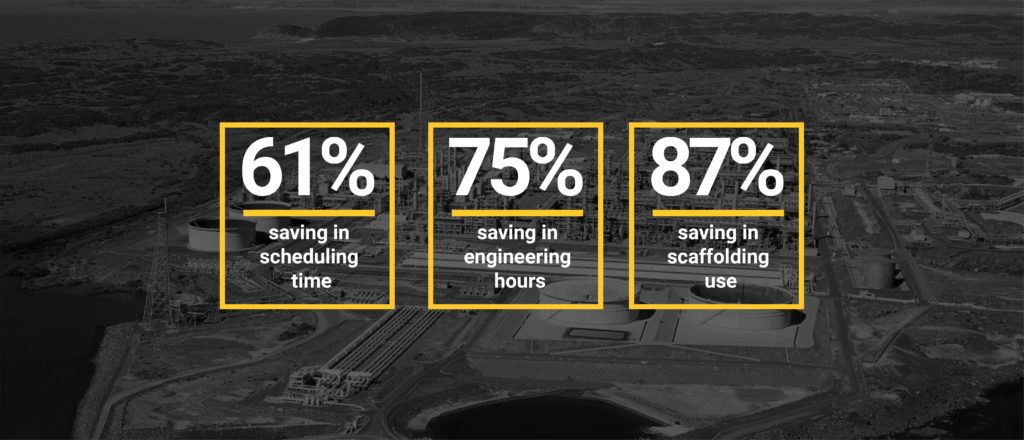
Data harmonisation and the business of saving big money
Digital transformation starts with data harmonisation. Find out why this process is so important.
It’s often said that, “knowledge is power.”
But the hard truth is that without the ability to act on your knowledge, information is useless, however painstakingly it was gathered.
This is especially true in the modern, digitally connected workplace where a blizzard of information can be gathered for just about any subject.
Scores of reports, surveys and briefs can be commissioned to interrogate the processes that underpin daily operations in the hope of finding efficiencies. But rarely does this information provide a clear picture that can be acted upon with surety.
Instead, it’s common for a mosaic of competing sources to be brought together, each pointing to something different. This can create an overwhelming and confusing picture that cannot easily be used for sound decision-making – “paralysis through analysis” in other words.
This is the crucial point where data harmonisation has arisen as a powerful force for transforming information into actionable knowledge. With data harmonisation, knowledge becomes power.
Companies that integrate data harmonisation into their daily operations are creating a huge advantage, acting clearly on what others squint to see.
At Silverhorse Technologies we’re passionate about the possibilities data harmonisation opens up for those who embrace it through our AssetHive intelligent data hub.
But we also understand it’s a brave new world that needs to be explained.
What is Data Harmonisation?
Data harmonisation is a digitally driven process that gathers information from a wide range of sources, including registers, ERP systems and IoT applications amongst others, then integrates it into a cohesive, consumable data set.
The ultimate goal of data harmonisation is to create clean data – information that adheres to the same broad standard and can be displayed together so that trends and insights can be gleaned for decision-makers. Clean data provides a basis for data science to be used to draw insights and gain as much knowledge as possible for decision making.
Information that is not harmonised can produce distorted results that don’t reflect the widest possible view that could be achieved. This is because information is often gathered and stored in different ways, whether it’s across formats like digital or paper records, varying file types or even labelled using non-standard naming conventions.
Through creating a common data set for your company’s information, the use of data harmonisation arms you with a sharp tool for making positive changes, whether it’s identifying inefficiencies or reinforcing successful processes.
A real life example of this process is the sensors a modern passenger aircraft uses to keep its position in the sky.
On-board computers constantly collect and harmonise information from different sources around the aircraft to create a picture of what’s happening and display it in an easy to understand manner.
This allows the pilots to make the best decisions about how to control the aircraft safely and fly it in the most optimal manner. Without this kind of harmonisation, the pilots and the computers would be locked in to analysing a series of data sets separately, losing time and focus as they switched between them.
The same can be applied to control rooms where operators rely on data coming in from field sensors to make decisions on how a plant can be run more efficiently – this serving as the ‘cockpit’ for any large plant or facility.
Data harmonisation in the workplace acts as a magnifying glass, bringing all data forms into one focus while allowing you to see the whole picture in much greater detail.
Data Harmonisation in Action
With data harmonisation in action and clean data available, your company has the power to take action that’s backed by facts.
While the intuition that comes with professional experience is an important human factor for managing daily operations, having a set of numbers that point irrefutably to something that needs to change or be enhanced is invaluable.
Suspicions can be confirmed. Observations can be tested. New processes can be devised and implemented. But the true power of data harmonisation is unleashed through repeatable processes – systems that can be tweaked using the power of data to make them more efficient over the long run.
A clear example of this advantage is the work Silverhorse Technologies did with Woodside, Australia’s largest natural gas producer. Woodside and Silverhorse Technologies collaborated on transforming corrosion management protocols at its Karratha Gas Plant – a 200-hectare facility that produces 16.9 Mtpa.
Corrosion of its pipework and other metal infrastructure is an inevitable part of daily operations, so our AssetHive intelligent data hub was adopted to manage a redesigned corrosion management workflow.
While very effective, Woodside wanted the system to be modernised digitally, harnessing the power of its data lake – containing massive amounts of raw data the company had already gathered from across its operations.
Through deploying data harmonisation across the information gathered about corrosion at the Karratha facility, AssetHive harmonised areas of duplication and anomalies pressing the start button on efficiency.
The results speak for themselves: 61% saving in scheduling time, 75% saving in engineering hours, and an 87% saving in scaffolding use.

Data harmonisation allowed Woodside to make smarter, better decisions about what areas of corrosion needed to be tackled, eliminating inefficient aspects while elevating the overall efficiency of the process.
This is why data harmonisation is so important – it doesn’t just create a beautiful set of numbers. Data harmonisation creates the power for companies of every stripe to make better decisions based on clear data gathered from their own processes.
Without the clarity of data harmonisation, your information remains opaque.
Data Harmonisation is for Everyone
Data is universal, and its benefits are open to anyone who wishes to embrace them through digital transformation.
Woodside’s increased efficiency is just one example of the power data harmonisation can bring to a company’s operations. Wherever information can be gathered, data harmonisation is able to collate and analyse the sources to create efficiencies and insights.
- A café could use data harmonisation to improve its service to customers through identifying faster ways of taking orders
- An engineering firm could eliminate down time from its projects, allowing it to put together more competitive tenders
- A marketing company could identify stronger sales opportunities by analysing customer behaviour
Whilst the decision to use data harmonisation is made by management, the changes made to daily operations are made by workers at the coalface who know their processes inside out.
What we have found at Silverhorse is that clear data often points the way to improvements or changes workers have wanted for a long time but were unable to demonstrate.
Armed with solid data, companies can make informed decisions about every aspect of the operations and empower their workforces to drive through effective changes.
Digital Transformation is the Future
As the world becomes ever more digitally connected, companies across the business spectrum are embracing digital transformation.
While this process allows speedier connection and communication for workers, it’s also a chance to gather large sets of information about the job flows each workplace undertakes in a way never before possible.
To us at Silverhorse Technologies, data harmonisation is a supercharger for positive change. The days of sifting through paper records and going by gut feel are over.
With data harmonisation bringing the picture into focus, there’s an opportunity to place data at the core of operations, allowing smarter, more efficient decisions backed by analytics to be made.
Management teams and workers empowered by clearly harmonised digital data will have actionable knowledge at their fingertips.
With data harmonisation, knowledge is power – and you should be wielding it.
